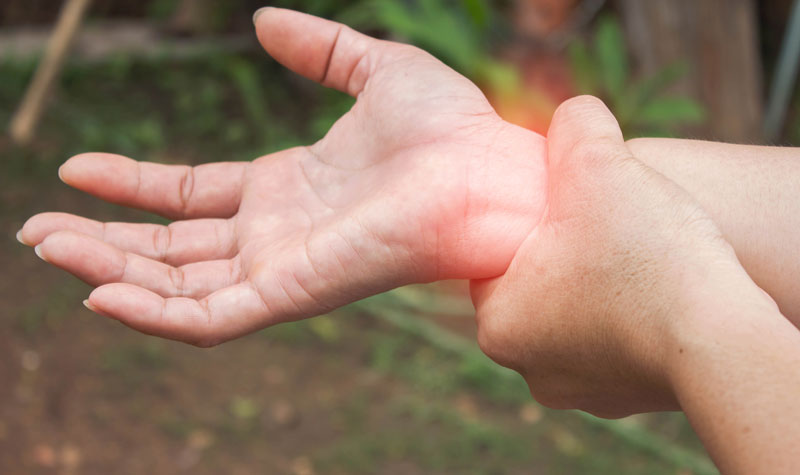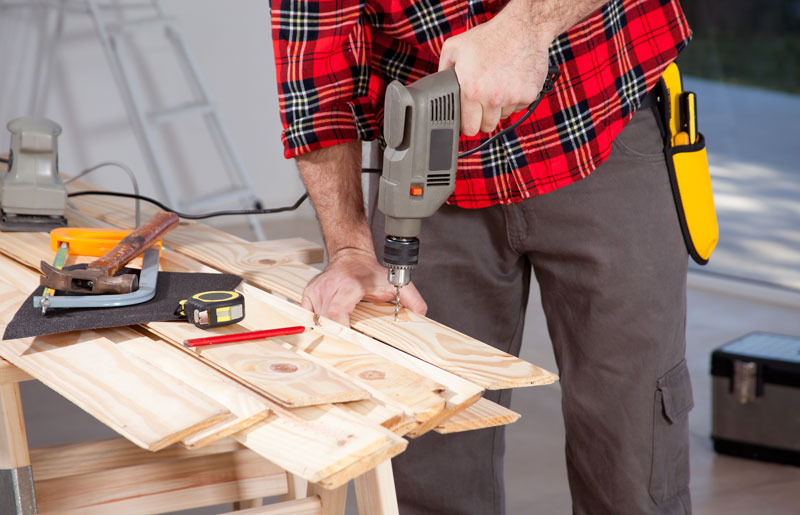Your Guide to hand-arm vibration
According to HSE, nearly 2 million people in the UK are at risk due to hand-arm vibration.
Hand-arm vibration is vibration that is transmitted into your hands and arms when using hand-held powered work equipment. Too much exposure to this can cause health issues such as Hand-Arm Vibration Syndrome (HAVS) and Carpal Tunnel Syndrome.
The Control of Vibration at Work Regulations was put in place in 2005, to ensure that those at risk do not suffer damage to their health through vibration. The regulation outlines how the risks of exposure can either be eliminated or controlled using Exposure Action Values; if the risks are higher than the values set out then a planned programme of vibration control must be put in place. All employers have a responsibility to ensure that their workers are protected against the harmful long-term effects of continual hand-arm vibration at work.
THE RISKS OF HAND-ARM VIBRATION
What is HAVS?
Hand-Arm Vibration Syndrome, or HAVS, affects the nerves, blood vessels, muscles and joints of the hands, wrist and arm. It is preventable but once the damage has been done it is irreversible and can become severely disabling. It is also often referred to as Vibration White Finger. From 2007-2016 over 7000 new claims of Vibration White Finger were made in the UK according to HSE. Although this figure has been decreasing in recent years it is still a prevalent health issue across several industries including construction, engineering and agriculture.
What is Carpal Tunnel?
Carpal Tunnel Syndrom (CTS) is a nerve disorder that can include pain, tingling, numbness and weakness in parts of the fingers and hand. It can lead to a loss of strength in the hands and not being able to feel things with your fingers. Particularly in cold and wet conditions, it can cause the tips of fingers to go white then red, being painful on recovery. Continuing to use high-vibration tools will make these symptoms increasingly worse and the numbness could become permanent. According to HSE, over 3000 new claims for carpal tunnel syndrome were made from 2007-2016 in the UK.
THE EFFECTS OF HAND-ARM VIBRATION
In addition to the pain and distress caused, there are more ways in which hand-arm vibration can impact working life. It can lead to an inability to carry out fine work, such as assembling small components, and everyday tasks like fastening buttons or picking up small objects like nails and screws. This links in with the potential reduction in grip strength that may prevent an individual from holding heavy objects and equipment, for fear of it being dropped. It can also reduce a worker’s ability to work in cold or damp conditions as this can trigger painful finger blanching attacks. With all of this in mind, the cost to employees and employers if no action is taken could be significant.

WHEN ARE WORKERS AT RISK?
Employees are at risk when they are regularly using hand-held or hand-guided power tools and machines, these include:
concrete breakers // grinders // sanders // hammer drills // disc cutters // chainsaws // brushcutters // hedge trimmers // scabblers // needle guns // powered mowers // chipping hammers
CALCULATING THE RISK LIMITS
The length of exposure to hand-arm vibration is measured in metres per second squared (m/s²). Workers are at greater risk when using a tool rated above 2.5 m/s² throughout an 8-hour working day. Continuous use of a tool rated above 5.0 m/s² represents a dangerously high risk.
The Construction Confederation and Hire Association Europe, in partnership with the HSE, developed a simple ‘traffic light’ system of colour coding to demonstrate the vibration risks associated with particular tools and equipment.
HIGH Vibration Risk Equipment
Covers equipment over 5m/s2. Specific risk assessments will be required.
MEDIUM Vibration Risk Equipment
Covers equipment that may be used for two hours maximum each day without further assessment. Products at the low end of the amber range may be used for longer periods but must be justified by a risk assessment.
LOW Vibration Risk Equipment
Covers equipment that may be used intermittently throughout an eight hour day with low risk of vibration injury.

HOW TO REDUCE THE RISKS OF HAND-ARM VIBRATION
Select equipment carefully
By selecting the most suitable, effective and powerful tool for the job in question, you are ensuring that it can be carried out quickly and more efficiently. Where possible it is advised to opt for lower-vibration tools, or use devices like jigs and suspension systems to reduce the need to grip heavy tools tightly. Also consider workstation design and how this can be improved to minimise the load on workers’ hands, wrists and arms.
Rethink work schedules
Prevention is the best cure for HAVS, meaning that any way in which you can limit the time that workers are being exposed is beneficial. Try to rethink work schedules to reduce the amount of time a worker uses a tool in one go and encouraging them to do other jobs in between.
Carry out maintenance checks
Tools and equipment that are not looked after will not perform the intended task in the most efficient way, so it’s crucial that they are properly maintained and checked regularly. Make sure cutting tools are kept sharp so they remain efficient and leave a worker exposed for as little time as possible.
Provide protective clothing
When necessary, provide employees with the appropriate protective clothing to keep them warm and dry. This will encourage good blood circulation and protect them from developing vibration white finger. Gloves should be used to keep hands warm but should not be relied on to protect against the effects of vibration.
Monitor health regularly
If signs of vibration damage are detected early on, you have more chance of saving individuals from the long term effects. Check in with workers regularly to ensure they are aware of the risks and are doing what they can to protect themselves.
Need more guidance on Hand-Arm Vibration and the best tools to choose?
Get in touch on 01234 871320 or fill out our online enquiry form.
Sources:
www.hse.gov.uk/vibration/hav
